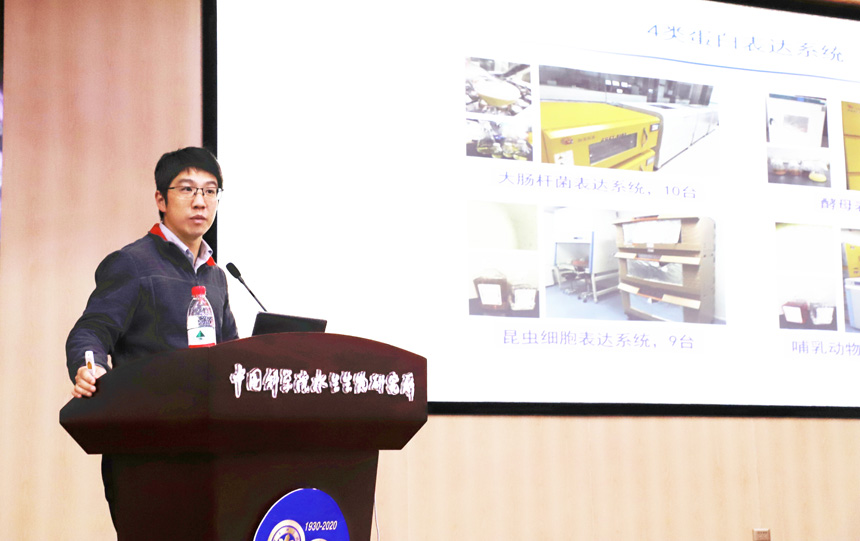
Newsroom
Prof. YIN Ping from HZAU Visits IHB

Prof. YIN Ping gives a lecture during his visit at IHB, Jan. 6, 2021. (Credit: IHB)
Prof. YIN Pin, vice president of College of Life Science and Technology at Huazhong Agricultural University and vice director of National Key Laboratory of Crop Genetic Improvement, was invited to give a lecture entitled “Molecular Mechanism of Cryptochromes inhibited and activated” at the Institute of Hydrology (IHB) of the Chinese Academy of Sciences on Jan. 6, 2021.
In his lecture, Yin instructed three main methods and range of applications in structural biology with special emphasis on the breakthrough and use in cryogenic electron microscope (Cryo—EM) technique. Meanwhile, he discussed with IHB faculty and students about molecular mechanism of Cryptochromes inhibited and activated which was recently published in Nature Structural & Molecular Biology and Nature Plants.
Cryptochromes (CRYs) are a type of photoreceptors extensively. In plants, the CRY photoreceptor, activated by blue light, generates multistage reactor, including photoreduction, oligonucleotides saccharification, interaction transcription factor with growth regulator, that regulates and controls plant growth and development.
Although all of the photoactivated phenotype of CRYs can be inhibited by blue-light inhibitors of cryptochromes (BICs) which is identified as an inhibiting protein of CRYs, the underlying molecular mechanism remains poorly understood.
Yin has demonstrated how the BIC2 inhibited the activation of CYRs through analyzing CRYs and the structure of BIC2-CRY2 by methods of structural biology. BIC2 inhibits Flavin Adenine Dinucleotide (FAD) because it hinders the electrons and protons to transfer. Meanwhile, BIC2 can maintain CRYs in a monomer state because it can inhibit CRYs oligomerization due to the photoactivation and activate oligomer of CRYs to depolymerize.
Improving experimental methods, Yin has acquired Cryo-electron microscopic structure of CRY2 tetramer activated by the blue light in vitro and found that the volume of FAD binding site of activated CRY2 tetramer was larger than that of the night. It showed that slack FAD binding site would lead to CRY2 protein oligomerization. The result has uncovered the molecular mechanism behind the reason that why FAD photoreduction leads to oligonucleotides saccharification which provides a new idea about the role of CRYs in optogenetics.
In addition, based on resolution strategy and methods of membrane protein structure, the conferee acquired an effectively help and support to carry out the work in structural analysis of membrane protein structure.
Prof. Yin has long been engaged in the research of biochemistry and molecular biology. With chloroplast RNA-binding proteins as the research object, Prof. Yin has undertaken research on dynamic regulation of RNA generation, processing and degradation, committed to revealing the role of RNA metabolic regulation in cell life by structural biology and biochemistry. Since 2013, he has published 19 papers on Nature, Nature Plants, Nature Communications and other journals, 14 as independent corresponding author and 5 as co-corresponding author.